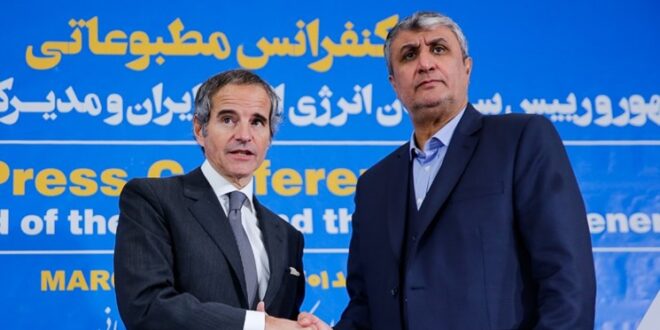Head of the Atomic Energy Organization of Iran (AEOI) Mohammad Eslami once again ruled out rumors about installation of surveillance cameras at a power plant in Central Iran, and underscored that Tehran’s coordination with the International Atomic Energy Agency (IAEA) is in accordance with the Non-Proliferation Treaty (NPT) and the Safeguards Agreement.
Speaking to reporters on the sidelines of a weekly cabinet meeting in Tehran on Wednesday, Eslami rejected a claim made by an Iranian lawmaker that the government has violated the Iranian Parliament Strategic Law, underlining that his country is not offering collaboration with the IAEA beyond customary boundaries.
Further, the AEOI chief refuted activation of more IAEA monitoring cameras at a site in the Central Iranian province of Isfahan.
“Relations between Iran and the IAEA are based only on the NPT and the Safeguards Agreement; neither more nor less,” the official stressed.
In a meeting with Iranian PMs in May, Supreme Leader of the Islamic Revolution Ayatollah Seyed Ali Khamenei stressed that the Strategic Action Plan to Counter Sanctions adopted by the Iranian Parliament in 2020 to counter anti-Tehran sanctions saved the country from “bewilderment in nuclear issue”.
The legislation was adopted more than two years ago by Iranian MPs to counter sanctions imposed on Iran by the United States and its Western allies, and promote the country’s peaceful nuclear program.
Iranian officials say Tehran, at the same time as adhering to the Strategic Action Plan to Counter Sanctions law passed by the parliament in December 2020, is determined to settle disputes and resolve differences with the UN nuclear watchdog within a framework of constructive and mutual interaction and technical cooperation.
IAEA Director General Rafael Grossi has recently reaffirmed that progress has been made in implementing the joint statement between Tehran and the UN nuclear watchdog about safeguard issues.
In early March, Grossi visited Iran and held meetings with Eslami, President Seyed Ebrahim Rayeesi and Foreign Minister Hossein Amir Abdollahian to discuss Iran’s nuclear program.
At the end of the Grossi’s trip, Tehran and the nuclear watchdog issued a joint statement, and agreed to continue their interactions in a spirit of cooperation and in full conformity with the competencies of the IAEA and the rights and obligations of Iran.
The AEOI chief underlined at that time that Iran considers the Safeguards Agreement with the IAEA, the Non-Proliferation Treaty (NPT) as well as strategic law adopted by the Iranian parliament as the basis for its nuclear activities, but underscored that the UN nuclear watchdog’s supervisions should be within Tehran’s frameworks and reservations.
Iran proved the peaceful nature of its nuclear program to the world by signing the 2015 nuclear deal with six world powers. However, Washington’s exit in May 2018 and its subsequent re-imposition of sanctions against Tehran left the future of the agreement in limbo.
Negotiations kicked off in the Austrian capital city of Vienna in April 2021, with the intention of removing anti-Iran sanctions and examining the United States’ seriousness in rejoining the agreement.
The talks, however, have been at a standstill since August 2022 due to Washington’s insistence on not removing all the sanctions and its failure to offer necessary guarantees that it will not abandon the deal again.

 Iran Energy News Oil, Gas, Petrochemical and Energy Field Specialized Channel
Iran Energy News Oil, Gas, Petrochemical and Energy Field Specialized Channel



